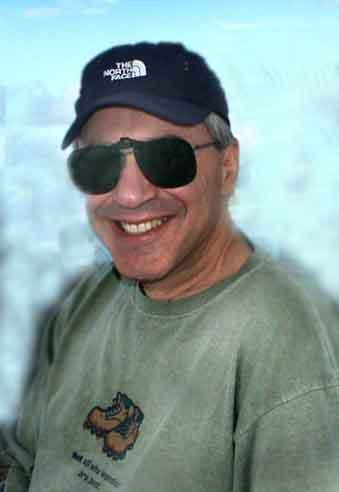Showing Up
A common expression among landscape photographers is, "f-16 and be there." It makes a lot of sense to those of us used to metering and setting our shutters up manually. In this day and age of point and let the camera figure it out, the expression may require some explaining.
The size of the opening that lets in light through a lens is called an f-stop. Without going into the geometry of it all, the larger the f-stop number, the smaller the opening and the less light that comes in (an inverse ratio thing...but I digress). The f-stops seen on lenses are generally 4, 5.6, 8, 11, 16, 22 and, on really good large format ones, 32 and 64. If you are a puzzle addict (or belong to Mensa) you may have noticed that each number is double the one two before it (I will pause while you dwell on that.......). It also helps to know that each one effects the light by a factor of 2. That is, f-16 lets in half the light as does f-11.
Now, film is rated in speed by what was called an ASA number and is now called an iso number. 200 speed film requires twice as much light as 400 speed film. That is why we need 400 speed for action shots where faster shutter speeds (less light) are used and slower film for waterfall pictures (see yesterday's post).
With all that in mind, I can tell you that without a meter, the proper exposure for any film in bright sunlight is generally 1/iso @ f-16. So, on a sunny day and using a 200 speed film, the exposure is 1/2ooth of a second (or 1/250th on some cameras) at f-16. Knowing that, all you need to do in order to get a great shot is be there. Hence, f-16 and be there.
Tomorrow, why we need all those shutter speed-f-stop combos. For preparation, read all you can on quantum physics and the string theory.
(apologies for no photo on this photo blog: the system seems to be down)
Paddle safe...
Dick








5 comments:
Great water shots on your last post .. I've been trying to work with my camera (Pentax Optio W20) to work with some of those idea's, but being an auto type camera, it doesn't leave me many options. I've had a couple of SLR's over the years .. I may have to go back to one of those.
Thanks for the great photo lessons!
dam. . I have to re-read this one. LOL!! I come from the digital age. . Guess, adjust, shoot, guess again. . .
Thanks for the comments. Remember, Derrick, that even a blind chicken gets a kernel if it pecks long enough :)
Hmmm.. taking a good shot from the beginning would save a lot of time. It definitely beats the "take hundreds of digital pictures, find one that looks ok, and photoshop it like mad until it looks good" method. :)
So right, Alex. Garbage in...etc. Digital has mad good photags better and mad bad ones worse as they force correctins with their soft ware. The blow out the highlights and wonder why they can't recover what was never recorded...etc..
Post a Comment